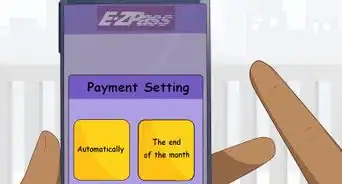This article was co-authored by wikiHow Staff. Our trained team of editors and researchers validate articles for accuracy and comprehensiveness. wikiHow's Content Management Team carefully monitors the work from our editorial staff to ensure that each article is backed by trusted research and meets our high quality standards.
This article has been viewed 8,185 times.
Learn more...
Fire Island is a fantastic vacation spot just off the coast of Long Island and close to the heart of New York City. There are many ways to get to Fire Island, but once you are there, you will find that the island lacks paved roads and many of its communities are only accessible by boat or on foot. You can travel to Fire Island by car, ferry, or personal boat depending on your preferences and the places you want to visit. Whether you want to explore, shop, swim, or just soak up some sun, arriving at Fire Island will be the beginning of a fun adventure.
Steps
Taking the Ferry
-
1Pick your Fire Island destination. The communities on Fire Island are most easily accessed by ferry. Each ferry company, however, only goes to certain locations on Fire Island. The place you plan on visiting first will likely determine which ferry company you will choose. If you’re not sure where you want to visit, try researching the different locations online to help you decide.
- Fire Island Ferries Inc. operates ferries all year round to Seaview, Fair Harbor, Ocean Beach, Dunewood, Kismet, Atlantique, and Saltaire.[1]
- Sayville Ferry Service sends ferries to Cherry Grove, Fire Island Pines, Sunken Forest, and Water Island. They operate year round.[2]
- Davis Park Ferry is closed during the winter and sends out its ferries from mid-March through November. The Davis Park Ferry travels to Davis Park and Watch Hill.[3]
-
2Check the ferry schedule. You can check the ferry schedules on the ferry operators' websites or when you arrive at the ferry terminal. The ferry companies typically depart every hour. Hours can vary seasonally and weather may cause delays.
- If a train is late to the ferry terminal, the corresponding ferry might delay for the passengers on the late train. This is not guaranteed, though![4]
- If you plan on taking a ferry on your return trip, make sure you check the schedule for the last departing ferry from your location on Fire Island.
Advertisement -
3Drive or take the train to the ferry terminal. You can find the location of the ferry terminal using the operator's website or a map application like Google Maps. Each of the ferry terminals is located at a major train stop. You can also drive or get dropped off at the ferry terminal by a friend or hired driver. If you drove your own car, parking is available for a fee.
- Ferry schedules are made to coincide with train schedules. You should have time to get from your train to the right ferry without much trouble.[5]
- If you are arriving via automobile or want to make sure you have plenty of time, arrive at the ferry terminal 30 minutes before your scheduled departure.
-
4Purchase your ferry ticket. All of the ferry operators allow you to purchase tickets at the terminal, and some will allow you to pre-purchase your ticket online or through an app. Fares vary depending on the type of ticket purchased. You never need a reservation for any of the ferry operators.
- Pay attention to the restrictions your ferry operator places on passenger freight. Some operators prohibit or charge extra for dogs, bikes, large packages, and carts or wagons. In some cases, the ferry operator may have you place your larger items on a separate freight boat.[6]
- Some ferry operators only accept cash for day passes and will only allow credit card purchases for multiple-trip ticket books or monthly parking passes.
- If you purchase your ticket in advance, you may not be able to refund or exchange it if you miss your scheduled departure. Before pre-purchasing a ticket, check with the ferry operator to see what their policy is.
-
5Board your ferry. Once you have your ticket in hand, get on the ferry and head to Fire Island. If you were assigned a seat, go find it before wandering around the ship. Most trips take between 20-40 minutes to reach Fire Island.
- Venturing out on the top deck can be scenic and refreshing, but it also lacks protection from the sun, wind, and cold. Dress appropriately if you are going to be on the top deck.[7]
-
6Take the ferry home before it stops for the day if you have a round-trip ticket. Keep in mind that different ferry operators and different locations on Fire Island will have varying ferry schedules. Before your trip, make sure you know when the last scheduled ferry ride is for your ferry operator so you don’t miss it.
- To find out the schedule for the ferry you’ll be taking, call the ferry operator or visit their website.
Driving in a Car
-
1Choose what kind of automobile transportation works best for you. There are several options you can choose from when driving to Fire Island. You can hire a taxi or a rideshare, charter a limousine or private driver, or use a personal vehicle.
- Nearly every taxi cab in New York City will drive to Fire Island. Some taxi companies offer scheduled vans and multi-passenger wagons for a discount rate. Many taxi companies also offer private drivers or limousine services to Fire Island if you are looking for extra comfort.[8]
- Expect heavy traffic, especially on the weekends, if you are taking a personal vehicle. Try to travel before 10 a.m. to avoid congestion.[9]
-
2Take one of the two bridges to Fire Island. Only two bridges connect Fire Island to Long Island: The Robert Moses Causeway and the William Floyd Parkway. The William Floyd Parkway will take you to the eastern end, where you’ll find beaches, a wilderness preserve, a campground, a restaurant, and a bar. The Robert Moses Causeway will take you to the western end of Fire Island, which has similar attractions, as well as a lighthouse. The western end generally has smaller crowds.[10]
- After you have crossed the bridge onto Fire Island, there are no other paved roads on the island. Travel by car on Fire Island can be difficult, especially in winter months.
-
3Pay your driver or parking fee. You will need to pay your driver if you hired a cab, rideshare, or private transport. It is also considered customary to tip your driver. If you drove in a personal vehicle, you will need to pay a parking fee.
- You can park your car for a fee after crossing the bridge onto Fire Island. Each bridge ends in a park that has a large parking lot for cars. The fee will depend on which lot you park your car in, as well as the time of year and how long you stay, but you can expect to pay around $10 USD per day.
- If you hired a driver, you can use a rideshare app or call a cab to pick you up from the same location you were dropped off at.
Hiring a Private Boat or Water Taxi
-
1Pick your Fire Island destinations. Knowing where you want to go on Fire Island will help you pick when and where you want to take a water taxi or a chartered boat. Private boats and water taxis are a common way to travel between communities on Fire Island. Many of the communities on Fire Island are not connected by roads, so you will need to get a water taxi or rent a boat to get from spot to spot without walking.
- If you plan on leaving Fire Island after the last ferry has returned to its terminal on Long Island, you will have to use a water taxi or chartered boat.
- If you’re not sure what locations you want to visit, try researching the different parts of Fire Island online. Keep in mind that you can take a water taxi or private boat to multiple destinations during your visit, so consider choosing several locations.
-
2Choose your boat and operator. Water taxis are generally less expensive than chartering a private boat. If you rent a boat, you will have greater privacy and control over your trip, but you will pay a flat rate for the day.
- Water taxi fares typically range from $9 to $30, while chartering a private boat can cost $200 to $1,000 or more depending on the type of boat you want.
- You must have a New York Boating Safety Certificate in order to operate a rented boat. If you do not have the certificate by the date of your trip to Fire Island, you will need to hire a captain.[11]
-
3Make a reservation. Contact one of the many companies that offer chartered trips or water taxis to Fire Island. Provide a time and date that you would like to visit Fire Island. Rates will vary depending on the season and the locations visited.
- Many of the ferry operators also run water taxi services or provide private chartered boats.
- If you’re interested in taking a water taxi, try Fire Island Water Taxi. For a private boat, try Long Island Boat Rentals.
- If you have a large party, be sure to make your arrangements several months ahead of time, especially during the summer season.
-
4Travel to your port of departure. If you are driving to your boat operator, make sure to check traffic reports and give yourself plenty of time to get there. If you are taking the train or a bus, pay attention to schedules and stops. Since you arranged for private transportation, you won’t need to worry about missing a ferry or dealing with schedules.
-
5Check in with the boat operator staff. Some operators will have you pay upon arrival, while others allow for pre-purchased fares and rentals. Make sure that the boat operator knows your schedule before you depart. If you are planning on making multiple stops in the same boat, be sure that the operator is aware.
-
6Board your vessel. Pay attention to any safety instructions or regulations discussed by the operator or posted within the boat. Introduce yourself to the captain if you have hired one. Get comfortable on your boat, relax, and enjoy your trip to Fire Island.
- If you’re taking a water taxi, keep in mind that many stop running around midnight or possibly earlier. Check with the water taxi company beforehand to find out their schedule so you know when to catch a boat home.
References
- ↑ https://www.fireislandcc.org/fitrans.html#c
- ↑ https://www.fireislandcc.org/fitrans.html#c
- ↑ https://www.fireislandcc.org/fitrans.html#c
- ↑ https://www.fireislandcc.org/fitrans.html#c
- ↑ https://www.fireislandcc.org/fitrans.html#c
- ↑ https://fireislandferries.com/info/fares/
- ↑ https://www.fireisland.com/fire-island-ferries-schedule/
- ↑ https://www.fireislandcc.org/fitrans.html#c
- ↑ https://www.fireislandcc.org/fitrans.html#c


































































